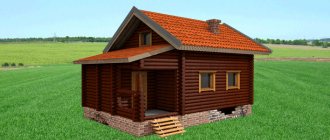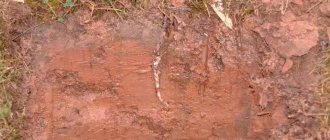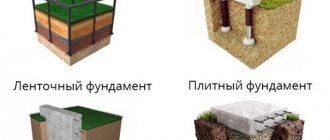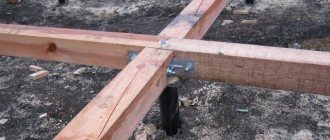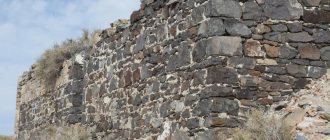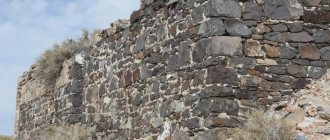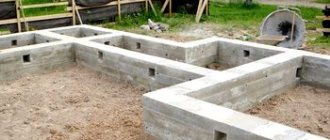A major role in this choice of foundation type is played by the technical and economic calculation of building a house. In addition, there are such objective circumstances as the bearing capacity of the soil.
Strip foundations are erected on dense soils, and piles are advisable to use on weak, heaving soil foundations.
Which foundation is better - pile or strip foundation? Let's try to figure it out.
Description of foundations on piles
By design, piles are strong pillars driven, screwed or inserted into the ground and resting on dense layers of soil below the freezing point. In the upper part, all the pillar heads are connected to each other by a horizontal grillage, which serves to evenly distribute the weight load from the walls between them.
Based on the installation method and design, there are three main types of piles:
- driving;
- screw;
- bored
They can be made from:
- tree trunks;
- rolled metal;
- non-reinforced concrete;
- factory-molded reinforced concrete.
It is worth saying right away that today wooden pile supports are used very rarely and only for temporary structures, the operation of which is designed for no more than 2-3 years.
Driven piles. Supports of this type are made in a factory from reinforced concrete and driven into the ground using special construction equipment (you can read more on the topic here). The technology of driven piles is used in multi-storey construction and in the construction of massive large private buildings.
In most cases, a shallow foundation is used as a grillage. Driven-in reinforced concrete supports have a high level of reliability, but require the highest costs associated with the high cost of materials and the use of special equipment.
Screw piles. Made from rolled steel pipes. They are a structure made of a steel pipe with a pointed end, above which screw blades are welded. Screw supports can be used on any type of soil, except for swampy peat bogs and those with a high stone content.
Can be installed manually or mechanically. Rolled steel in the form of a channel, I-beam or profiled pipes is used as a grillage. It is allowed to install a grillage made of reinforced concrete or in the form of a shallowly buried tape.
Bored supports. To install a pile foundation of this type, wells of the calculated diameter are dug to the depth of soil freezing. A sand-crushed stone cushion is poured into them and hollow formwork made of pipes or rolled sheet material is installed. A reinforcing frame is installed inside the structure and concrete mixture is poured. After the concrete has hardened, the upper part of the supports is connected with a concrete grillage.
Due to their increased load-bearing capacity, bored supports are widely used for the construction of one- and two-story stone buildings in private construction. Excellent structural stability allows construction on any type of soil.
Deepening
Some people naively believe that if we are talking about a modest wooden house, then there is no need to deepen the foundation. Like, what will a small shed do to him? Alas, the foundation of the house must always be below the freezing depth. Otherwise, the foundation will move, float and completely deform in a few years.
Therefore, you won’t be able to save money here either. Either make a full-fledged concrete foundation, or choose piles.
Description of strip foundations
They are massive building structures made of reinforced concrete, blocks, stone or brick. In terms of its external configuration, such a foundation is a continuous support for walls in the form of a flat strip. The use of a large number of materials makes the construction of a strip base a labor-intensive and expensive undertaking.
The entire weight load from the building’s building structures is transferred to the stone belt and evenly distributed onto the ground.
On stable, dense soils it can be used for any buildings up to 5 floors high. In case of weak soil, heaving and horizontal movements, the maximum height of the house is up to 2 floors.
Use on marshy and clayey soils is not recommended.
The installation of a strip foundation requires the organization and implementation of large volumes of excavation work. However, if you have basements or a large cellar, these efforts will be justified. Unlike pile foundations, the tape requires the construction of a sand-crushed stone cushion, the installation of formwork and the installation of reinforcing frames.
Base insulation
And again, fans of concrete insist that there will be fewer problems with a concrete foundation. Alas, no. The requirements for insulation and insulation of communications are the same for all types of foundations. Therefore, you should not hope that with a concrete base there will be less headaches.
You can’t do without finishing materials. Either concrete or sewn-in piles will have to be covered with siding, natural stones or panels made of fiber-reinforced concrete or other material. Accordingly, there is no winner in this matter at all. Perhaps there will be a striking difference in cost.
Advantages and disadvantages of pile foundations
To prepare a basis for comparison on the topic of which is better, a strip foundation or screw piles, it is necessary, first, to determine the advantages and weaknesses of pile supports. Pros:
- the cost is 25-30% lower than that of strip structures;
- fast construction time of the supporting structure;
- possibility of construction on most types of soil;
- high level of stability and durability;
- lack of excavation and use of bulk non-metallic materials;
- performing work at any time of the year, even at sub-zero temperatures;
- ability to withstand heavy weight loads.
Despite the large number of positive qualities of a pile foundation, these structures also have several disadvantages :
- impossibility of installing piles in rocky and rocky soils;
- lack of basements under the building on a pile foundation;
- the need to insulate the free space under the floor of the basement wall installation.
If you do not know the requirements for the manufacture of piles, you can choose and buy low-quality material. For example, metal screw products with a thin pipe wall, poorly welded blades, or a design that does not suit your soil type. Therefore, it is better to entrust the purchase of material to a specialist who will perform installation work.
Floor warmth
There is an opinion that a concrete foundation will allow you to forget about cold floors, and the screw piles will be constantly ventilated. This is not true, and here's why:
- Concrete has high thermal conductivity, so it also quickly loses all accumulated heat.
- Since its thermal conductivity is higher than that of the soil, it will freeze faster, which means it will cool the floor in the house.
- If you do not prepare a layer of waterproofing when laying the foundation, the concrete structure will also constantly get wet. This means the floor will be even colder.
Thus, the concrete foundation becomes only a barrier to the wind. But it will not make the floor warmer in any way. The same results can be achieved by sewing up the piles. In addition, screw piles allow you to set up a simpler ventilation system. This means the ground will be drier and the floor warmer.
Pros and cons of strip foundations
The main advantage of a strip foundation is the possibility of arranging basements and high-quality insulation of the lower part of the building. In the basement or ground floor you can lay utility lines, make a non-freezing water supply and organize several utility rooms.
Despite the large volumes of excavation and installation work, the construction of a foundation in the form of a strip can be done independently by inviting 2-3 assistants. Of the special construction machinery, you only need a concrete mixer and a vibrating device for compacting concrete. To dig a pit, you can simply hire an excavator.
A properly made strip foundation is durable and can last up to 150 years, despite any external negative influences. A layer of hydraulic insulation will protect the structure from groundwater and melt water, and thermal insulation will reduce heat loss.
At the same time, despite the listed number of advantages, tape-type bases have several significant disadvantages , including:
- large labor costs during the execution of work at all stages;
- a long construction process associated with large volumes of excavation work and concrete hardening time (we described the technology here);
- high construction costs;
- impossibility of construction on certain types of soil;
- the need for process continuity when pouring concrete.
But if we take into account the reviews of developers, then the listed shortcomings are fully justified by the high level of structural reliability and the presence of a basement.
Reliability
Although concrete looks much more reliable than piles, this does not in any way indicate its real characteristics. Firstly, the concrete still needs to be laid correctly so that it hardens evenly. And this takes up to 28 days. Of course, you yourself will have to monitor the concrete base for almost a month. If you violate precautions, then all the work will be in vain. But even if the builders themselves made a mistake, how can you then prove that it was not you who walked on the unfrozen foundation, and their hands were completely off their shoulders?
With screw piles everything is simpler. They did the work, looked at it, accepted it. All the defects are immediately visible and can be asked to be corrected on the spot. You don't have to wait weeks to appreciate the build quality at all. And you don’t have to hide them from sunlight. Thus, with the greatest probability, they will build you the wrong “ribbon”, which means that its reliability will be at a low level.
Comparison of two foundations
Which foundation is better, strip or pile-screw? To be honest, strip foundations are used in the construction of buildings as a traditional structure, which has shown good results for a long time.
However, practice shows that pile supports have a higher load-bearing capacity. Let's try to compare these two designs according to such indicators as:
- financial expenses;
- construction time and labor costs during construction;
- possibility of application;
- technological effectiveness and seasonality.
Financial expenses
Which foundation is cheaper - strip or pile? When constructing a strip foundation, there are costs that are not required for pile structures:
- excavation and leveling, storage and removal;
- transportation costs for the delivery of equipment, reinforcement and concrete mixture;
- backfilling the sand and gravel cushion and compacting it;
- concreting or installing blocks using lifting equipment.
In total, a strip foundation is much more expensive .
Construction time and labor costs
The design of a strip foundation is much more complex in its structure. During its construction, it will take time to carry out excavation work, install formwork and reinforcement cage, install an underlying cushion, and pour concrete. After this, you will have to wait until the concrete mixture sets properly and begin waterproofing work.
In a pile foundation, it is enough to screw in, drive or install the piles and tie them with a grillage. Work is completed several times faster.
Possibility of application
For pile foundations, there are practically no restrictions on use depending on the type of soil. The exception is swampy peatlands, where no one usually builds anything. But the use of tape depends on the depth of its placement.
If the base of the structure rests on dense layers of soil below the freezing point, then only lateral loads act on the tape and its stability depends on the degree of reinforcement, that is, the strength of reinforced concrete. Shallow foundations can only be used on stable, dense soil with a shallow freezing depth and deep groundwater.
If there is a complex terrain of the site, with a slope or elevation changes, the cost of a strip foundation increases sharply, while a pile foundation allows you to solve the issue without any problems.
Price issue
Let's say we decide to build a small 8x10 wooden house. To organize a structure made of screw piles, we will need to spend money on the delivery of materials, installation, geological examinations and on the piles themselves. As a result, the foundation of screw piles will cost approximately 70,000 rubles. The most impressive cost columns will be for 16 piles (each approximately 2,250 rubles) and for their installation (approximately 38,000).
Well, if we go to build a strip foundation, then we will have to double the list of everything needed. If engineering and geological surveys for piles cost 2,500 rubles, then to calculate the strip foundation you will have to pay 55,000 rubles. Added:
- Reinforcement (about 7,000). And the fittings for our house itself will cost about 40,000.
- Pouring concrete (another 33,000 rubles). And of course you need the solution itself. It will cost another 50,000 rubles.
- Waterproofing (you can’t live without it, so you’ll have to spend at least 12,000).
- Plywood and burs (that's at least another 15,000).
The list can be continued longer. Ultimately, such a foundation will cost not just a pretty penny, but 270,000 rubles or more.
And that is not all. Can you determine the quality of concrete by eye? How to catch the moment when the reinforcement begins to be laid? Contractors almost always use cheaper materials. Therefore, such a concrete foundation will be too expensive. Piles are much easier to check. And their installation is usually carried out without problems in front of the customer.
Criterias of choice
It is not entirely correct to say which foundation is better. It’s just that each type of foundation (strip or pile) has its own characteristics and is suitable for a specific type of soil. An objective assessment of the following aspects will allow you to choose the right type of foundation:
- soil features;
- features and type of facility under construction;
- the uniqueness of each type of foundation;
- financial capabilities, size of the construction site, etc.
Before giving preference to one type of foundation or another, you should conduct thorough geological surveys and take soil samples at different times of the year. It is advisable to have the analysis carried out by a professional. Based on the data obtained, a decision is made on choosing the type of foundation.
Calculating the load that the building puts on the foundation will help to assess how beneficial the latter will be. Also important points are the presence or absence of a basement, number of floors and purpose of the building.
These and many other calculations form the basis of design documentation. Based on it, a foundation plan is drawn up, which reflects its type, width, depth, configuration features, pile spacing, shape and dimensions, and cross-sectional features of the latter.
Summary
Technologically, the construction of a closed loop loop is simpler than at a base with piles. However, this will require a large amount of materials. Nevertheless, such designs are popular with many developers. In most cases, for fences with brick pillars, it is the strip base that is built.
In areas with complex terrain and weak soils, preference is given to foundation structures based on piles, since there is simply no alternative here. In any case, the choice of foundation for a house should take into account the hydrogeological and geological features of the area where construction takes place.
Distinctive soil features that must be taken into account
- Rocky and stony soils serve as an excellent site for construction, because water cannot wash them away, and they are also not afraid of frost.
- Clayey. There are three types of these soils: clay, loam and sandy loam. All three are a rather poor choice of location for construction, because they are highly susceptible to deformation and exposure to water, and have low density.
- Sandy. They allow liquids to pass through well, that is, water does not stagnate and does not threaten the building; they can be compacted and thus increase density. They are divided into the following types: gravelly, medium sand and fine silty sand.
- Organic. Perhaps the greatest number of problems arise with them; they are greatly deformed, sag, and have a loose consistency.
Types of supports
Let's consider what types of screw supports are used in modern construction:
By area of application
This type of foundation is used much more widely than it might seem at first glance.
Screw piles are successfully used in the following areas:
- Capital construction.
- Individual residential construction.
- Bridges, piers, other hydraulic structures.
- Load-bearing supports of power lines, masts, etc.
- Hangars.
- Greenhouses.
- Fences or enclosures, etc.
The rise in popularity of this type of base has greatly expanded the range of applications, and the process is not over yet.
Dimensions
Steel pipes of different diameters are used. The most common pipes are 108 mm; this size provides a fairly high load-bearing capacity with good penetration into the ground.
The general range of pipe diameters is between 57-219 mm, but in some cases thicker supports are used.
In private housing construction, pipes larger than 159 mm are not used due to the difficulty of immersion.
The length of the pipes also has many options. There are standard sizes from 1650 to 9000 mm, used in appropriate conditions.
The lower the strength and density of the soil, the longer the trunk should be.
Number of blades
There are single and multi-bladed designs. Single blades are used on relatively stable soils.
Exceeding the load or reversing the pile during installation leads to loss of adhesion to the ground.
For critical buildings on weak-bearing soils, multi-bladed piles are used, which demonstrate greater resistance to possible loads.
In addition, increasing the number of blades allows you to reduce the diameter of the barrel, which makes diving easier.
At the same time, the thickness of the walls must provide the necessary rigidity.
Tips
The tip takes on the load when immersed, which puts forward quite stringent requirements for its design.
Exist:
- Welded tips. They are made by narrowing the diameter of the pipe by removing wedge-shaped sections and connecting the resulting fragments into a cone. The seams are welded and a pointed end is formed. Used for relatively weak, soft soils.
- Cast tips. They are manufactured (cast) separately and attached to the pipe. They are thick and capable of destroying obstacles. Used on dense and difficult soils.
Material of manufacture
Different grades of steel are used - from the usual St 3 to the more durable St 20.
For use in highly aggressive soils with heavy loads and the possibility of electrostatic corrosion, durable steel grades 30 KhMA and 09G2S are used.
Type of protective coating
The most effective coating is considered to be a layer of zinc. At the same time, the material itself must be sufficiently resistant to corrosion.
Polymer materials applied to the piles are erased during immersion and cannot fulfill their task.
They are necessary only to protect the outer part of the supports and require periodic updating.
Many engineers offer their own protection options, from mastics to applying a layer of rubber, but these methods have not yet become widespread.

